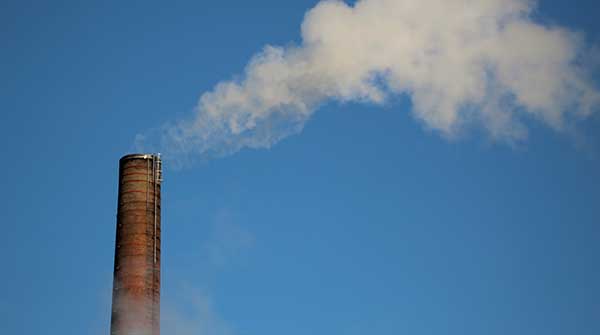Does Canadian natural gas have lower methane emissions than the rest of the world? Who knows
 As a PhD student working on methane, I recall hearing claims from regulators and industry representatives that Canadian natural gas boasted the world’s lowest methane emissions. At the time, the assertion seemed plausible, given Canada’s early adoption of stringent regulations and visionary policies enabling the use of alternative methane monitoring technologies and a robust regulatory offset market.
As a PhD student working on methane, I recall hearing claims from regulators and industry representatives that Canadian natural gas boasted the world’s lowest methane emissions. At the time, the assertion seemed plausible, given Canada’s early adoption of stringent regulations and visionary policies enabling the use of alternative methane monitoring technologies and a robust regulatory offset market.
However, almost a decade later, Canada still lacks the necessary data and methodologies to substantiate claims about the low-methane performance of its gas.
Canada is not entirely to blame. To prove our industry’s relative performance, we must use a common standard for measuring emissions, one also used by the countries or regions we compare ourselves against.
Unfortunately, we have been missing both a standardized set of measurements and a framework for interpreting them to draw inferences about the performance of entire regions, industries, or countries. Additionally, many other gas-producing nations have been slow to adopt robust measurement practices, preventing meaningful comparisons.
To make matters worse, industry, government, and society have grown increasingly confused as diverse new measurement technologies provide emissions estimates inconsistent with regulatory reporting techniques. A company’s (or a country’s) ‘true’ emissions are, therefore, unclear and complicated by a combination of imperfect engineering equations, immature measurement capabilities, and extreme spatial and temporal variability in emission rates.
Fortunately, emerging initiatives and data could enable Canada to establish itself transparently and credibly as a global leader in low-carbon energy. For instance, the MiQ-Highwood Index, released in June 2023, provided, for the first time, a measurement-informed national-scale average methane intensity for the U.S. of 2.2 percent.
Unfortunately, no similar credible estimate currently exists for Canada. With new methane regulations currently in development both in Canada and the U.S., and with the emergence of new public datasets that greatly exceed historical estimates, we must think carefully about how we acquire, interpret, and disclose emissions data so that our claims are seen as credible.
The key to communicating Canada’s narrative to the world lies in adopting new international standards for measuring, quantifying, extrapolating, and disclosing emissions from the oil and gas (O&G) industry. Canadian companies and academics are actively contributing to developing and implementing these global standards to enable benchmarking of companies, O&G supply chain segments, specific commodities, and entire countries in their emissions performance assessments. Pertinent examples include the GTI Energy Veritas Protocols, the United Nations OGMP 2.0 methane reporting program, and the MiQ Standard for low-methane gas certification.
Through these standards, the world is transitioning away from rudimentary “bottom-up” accounting frameworks grounded in industry-average assumptions, as currently used by Canadian regulators, and towards company-specific carbon accounting based on emissions inventories informed by site-level “top-down” measurements. In the U.S., intensity-based targets, backed by empirical data and the best available quantification methods, are replacing traditional emissions reduction targets expressed as a percentage of an elusive and unmeasurable baseline, as done in Canada.
Until now, Canada’s credibility in backing up its performance claims has suffered due to inadequate measurement and reporting of emissions. To stay competitive, we must shift towards reporting methane intensity using a common language accepted and understood by international stakeholders. This requires empowering Canadian industry to develop and maintain measurement-informed emissions inventories aligned with international standards. Failure to do so will result in new public datasets with satellites and aircraft revealing the real story to the world, likely harming Canada’s credibility.
To address these challenges and seize the opportunities ahead, I urge the governments of Canada and Alberta to embrace measurement, transparency, and credibility by taking the following steps:
- Conduct a review of emerging international carbon accounting standards, assessing their alignment with Canadian requirements for data collection, quantification, and tracking.
- Shift towards intensity-based targets instead of vague percentage reductions based on a long-past baseline year.
- Design, build, implement, and maintain an emissions database to share information and demonstrate excellence internationally, adhering to widely accepted standards and measurement-informed reporting requirements.
- Encourage and support operators to join international methane reduction and reporting programs.
It is time for Canada to take a decisive step towards establishing itself as a global leader in low-carbon energy and methane emissions reduction. By embracing new international standards and investing in measurement-informed reporting, we can achieve our environmental goals, enhance our industry’s credibility, and secure a sustainable energy future.
Thomas Fox is President of Highwood Emissions Management. His expertise is in methane detection and quantification technology, voluntary initiatives, measurement-informed inventories, and forecasting emissions management strategies through simulation. At Highwood, Thomas works with industry, regulators, and innovators to evaluate and deploy cutting-edge emissions management solutions. He holds a PhD from the University of Calgary and an MSc from McGill University.
For interview requests, click here.
The opinions expressed by our columnists and contributors are theirs alone and do not inherently or expressly reflect the views of our publication.
© Troy Media
Troy Media is an editorial content provider to media outlets and its own hosted community news outlets across Canada.



